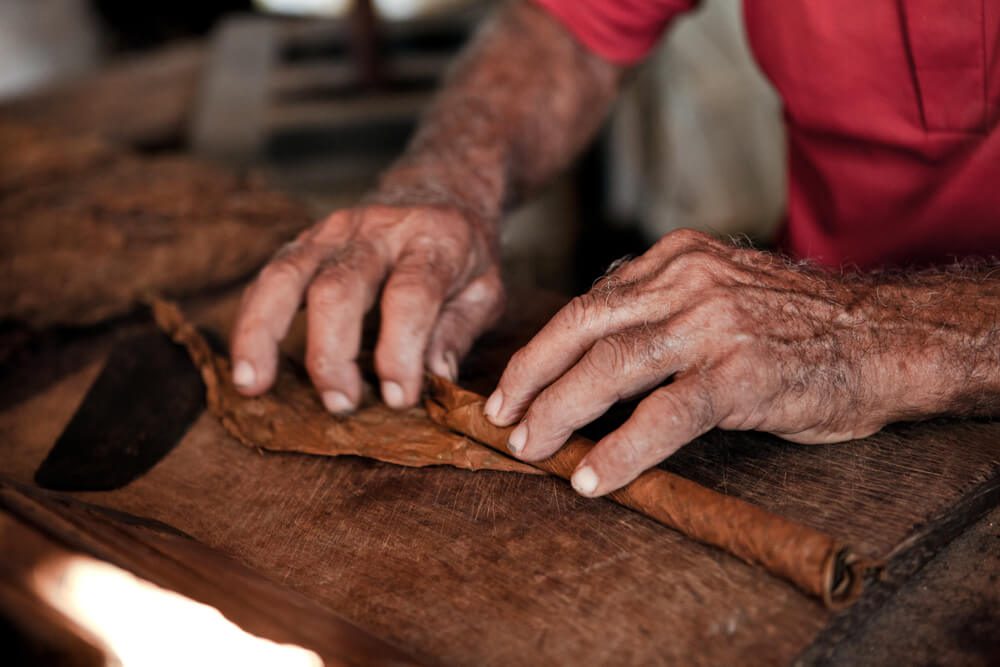Cigar aficionados often describe the process of cigar rolling as a meditative and rewarding experience. Mastering this ancient craft allows you to truly appreciate the complex artistry that goes into each cigar and enhance your overall smoking experience. This comprehensive guide will take you through the intricate process of hand-rolling cigars, sharing tips from expert cigar rollers and exploring the nuances that make every cigar unique.
Cigar Rolling
The art of rolling cigars has a rich history, with roots in various cultures across the globe. To begin your journey into this craft, it’s crucial to understand the process’s fundamental elements: the tobacco leaf selection, handling, and, of course, the rolling itself. Let’s dive into the world of hand-rolled cigars and discover the secrets behind this centuries-old craft.
Understanding Cigar Anatomy and Components

A cigar is more than just a bundle of dried tobacco leaves. It consists of three main components:
- Wrapper: This is the outermost leaf that gives the cigar its final appearance and significantly influences its flavor. The wrapper is typically smooth and blemish-free.
- Binder: Acting like a casing, the binder holds the filler tobacco in place and helps maintain the cigar’s shape. It also contributes to the burn rate and overall flavor.
- Filler: This is the heart of the cigar, providing most of the flavor. Filler tobacco can be either long-leaf (used in premium cigars) or a mix of chopped leaves, stems, and other tobacco bits (found in machine-made cigars).
Selecting the Right Tobacco Leaves
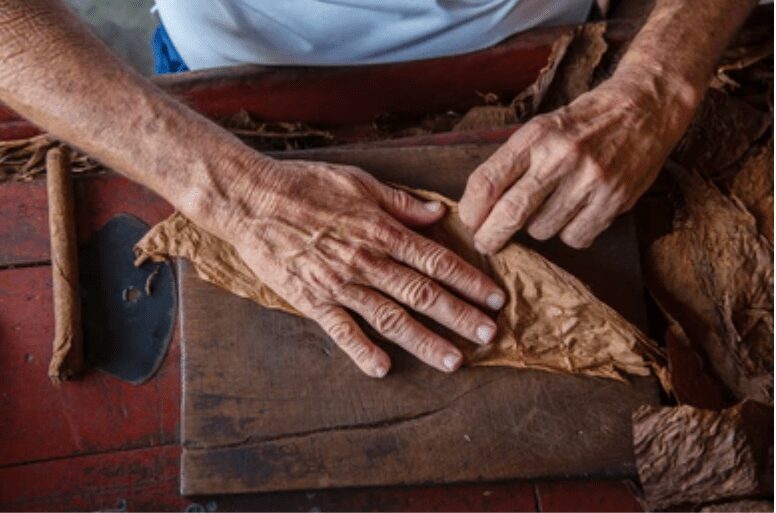
Your choice of tobacco leaves will play a significant role in your cigar’s overall flavor and smoking experience. High-quality, mature leaves are a must. They should be moist but not wet, flexible but not brittle. Each leaf’s color, texture, and smell can give you insights into its potential flavor profile.
Preparing and Handling the Tobacco
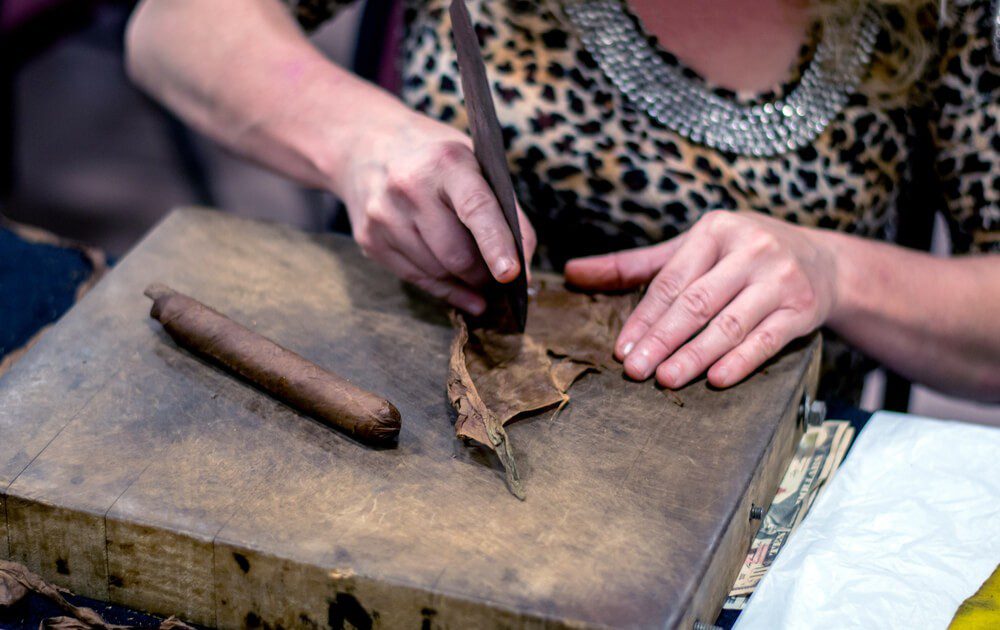
Once you’ve selected your leaves, you need to properly prepare them. First, they should be humidified to ensure flexibility. Then, using a sharp chaveta (cigar roller’s knife), you need to remove the central vein from both the binder and the wrapper leaves—this process is known as “destemming.” It’s vital to handle the leaves gently to avoid tears or cracks that could impact the cigar’s integrity.
Mastering the Art of Cigar Rolling

Now comes the most hands-on part of the process. Start by spreading out your binder leaf and laying out a bunch of filler tobacco along one edge. The amount of filler you use will determine the cigar’s thickness. Now roll the binder leaf around the filler, forming a rough cigar shape. Apply gentle but consistent pressure to ensure a firm, even roll, careful not to make it too tight, which could restrict the draw.
Achieving the Perfect Cylinder Shape
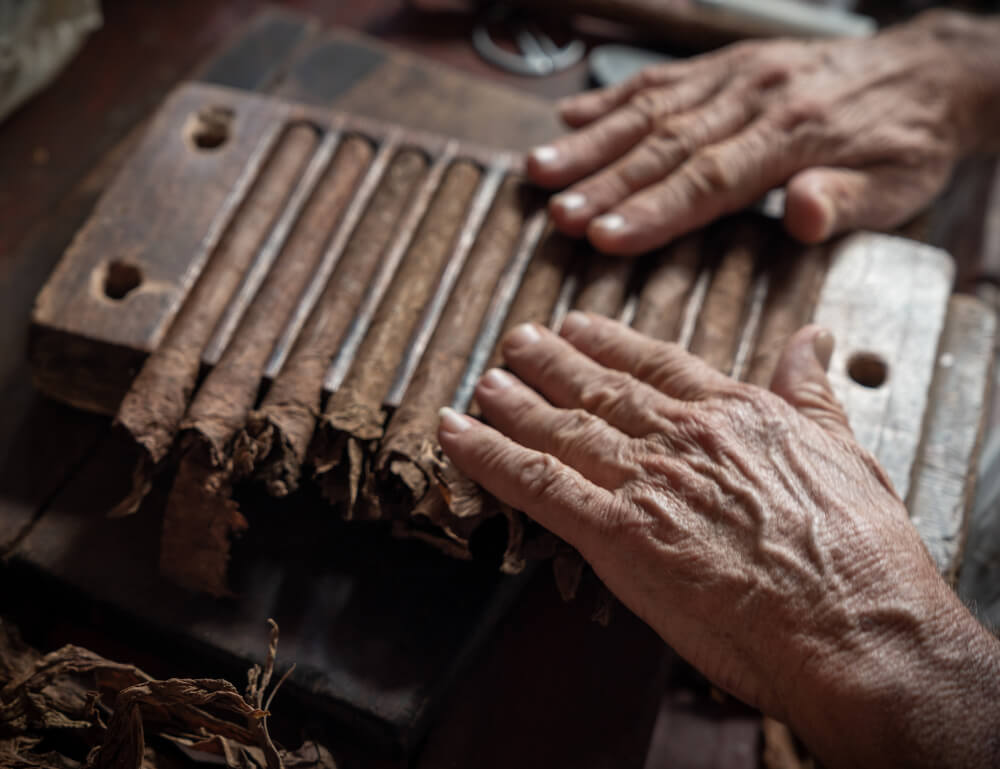
Creating a smooth, cylindrical shape requires a bit of finesse. Using a mold can help achieve the perfect shape and maintain uniformity, especially for beginners. Place your rough cigar in a wooden or plastic mold and leave it there for a few hours, or even overnight. The pressure will help the cigar maintain its shape during the final steps.
Applying the Wrapper Leaf
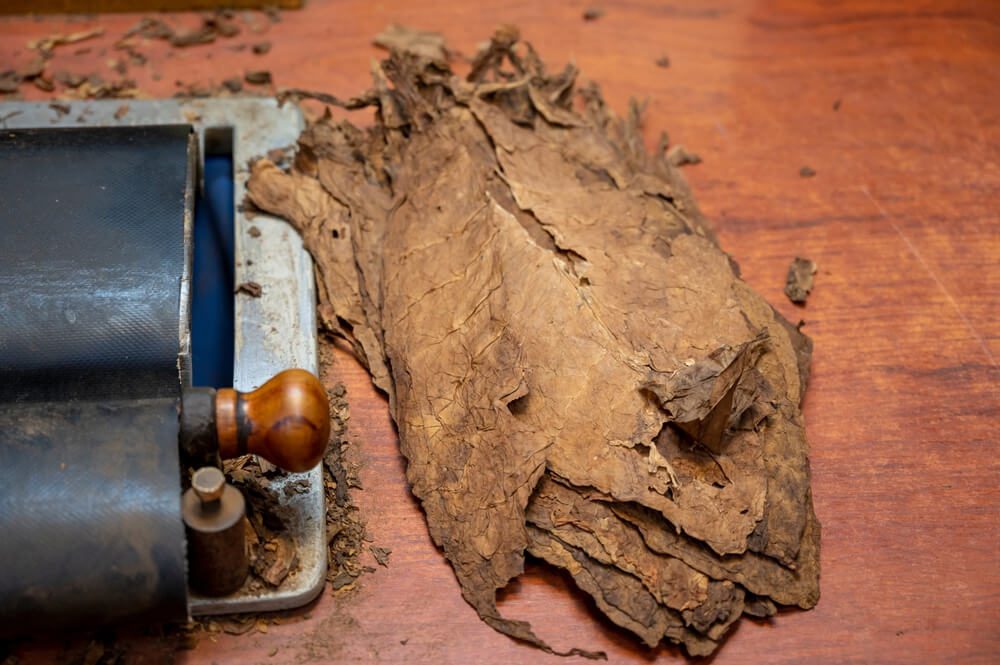
Applying the wrapper is the final touch to your cigar and can make or break the aesthetics of your hand-rolled masterpiece. Start at one end of the cigar and wrap the leaf around in a spiral motion towards the other end. Use a small amount of tasteless vegetable gum to secure the wrapper. Remember, the smoother the wrap, the more appealing the cigar will look.
Finalizing the Cigar and Applying the Cap
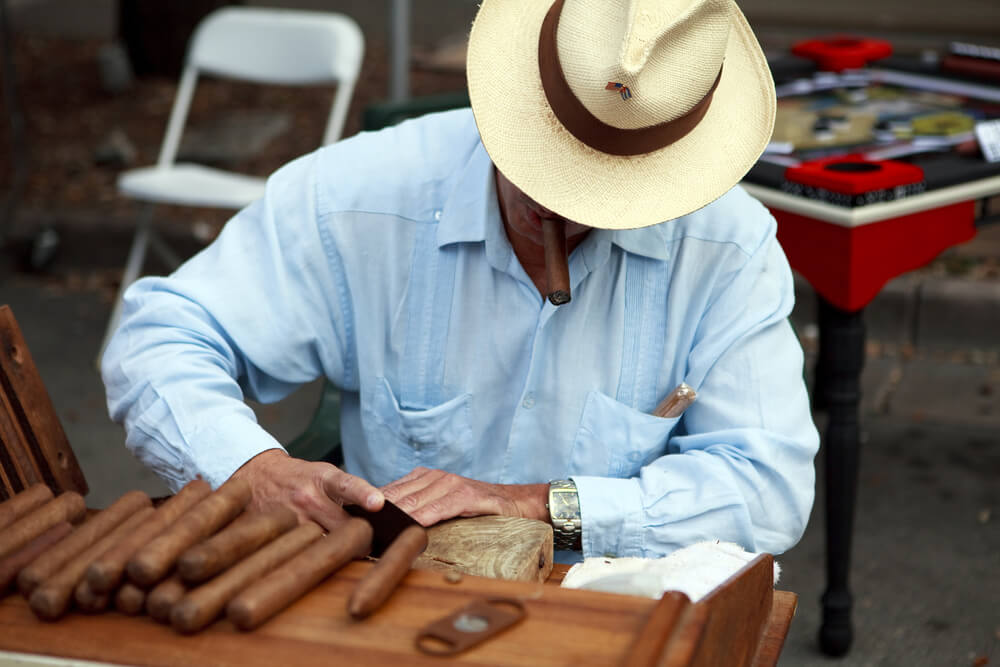
Once you’ve wrapped your cigar, you need to apply a cap at the head (the part you’ll smoke from) using more vegetable gum. This cap helps prevent the wrapper from unwrapping when you cut the cigar. Use a cigar cutter to trim the foot (the part you’ll light) if necessary.
Curing and Aging Cigars
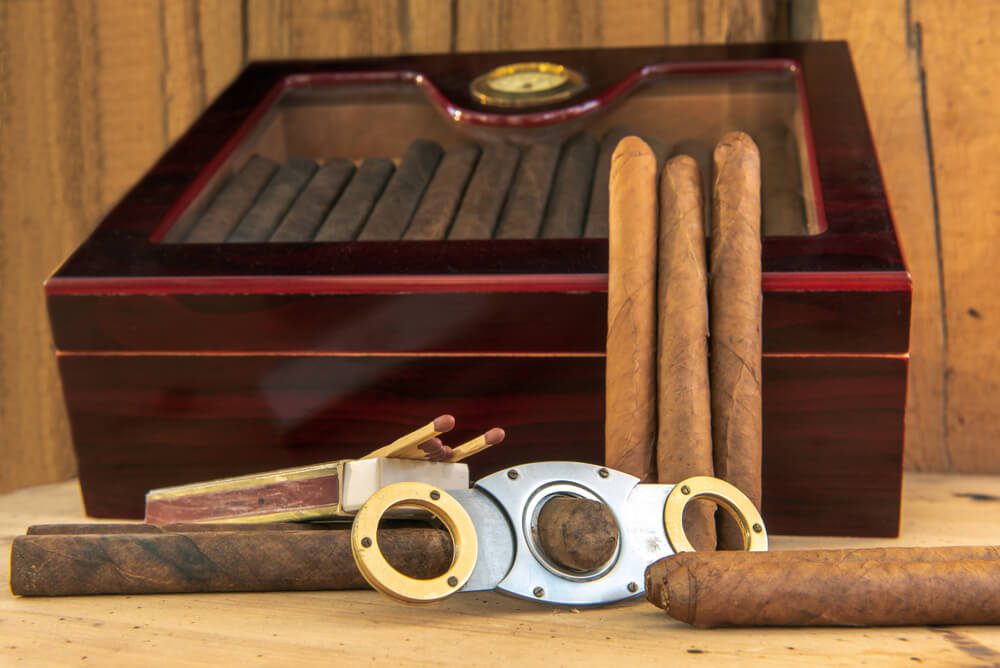
Freshly rolled cigars need to be cured in a humidor for at least a couple of weeks, allowing the flavors from the wrapper, binder, and filler to meld. Patience is key here—the longer you allow the cigar to age, the more refined and balanced the flavors will become.
Storing and Preserving Your Hand-Rolled Cigars
Proper storage is crucial to maintain your cigar’s quality. Keep your cigars in a humidor at 70% humidity and around 70 degrees Fahrenheit. This mimics the tropical climates where most tobacco is grown and ensures your cigars will age properly.
Cigar Etiquette and Enjoyment Tips
There are certain unspoken rules when it comes to smoking cigars. For example, don’t inhale the smoke like a cigarette; instead, let it sit in your mouth to taste the flavors. Also, allow the cigar to go out on its own if you’re done smoking—stubbing it out can release unpleasant odors.
Exploring the World of Cigar Flavors and Pairings
Each cigar offers a unique combination of flavors, often complemented by a good drink. Whether it’s a full-bodied red wine, a rich bourbon, or a smooth coffee, finding the right pairing can elevate your cigar-smoking experience.
The Cultural Significance and History of Cigars
Cigars have played a significant role in many cultures worldwide. From the ancient Mayans to the modern aficionados, cigars have always been a symbol of celebration, success, and sophistication.
By mastering the art of rolling your own cigars, you’ll gain a deeper appreciation for this timeless tradition, enhancing your smoking experience. Just remember—like any craft, it requires practice, patience, and, above all, passion. So take your time, enjoy the process, and before you know it, you’ll be rolling cigars like a seasoned torcedor.
Frequently Asked Questions
Can I use any type of tobacco to roll a cigar?
While you technically can use any tobacco, cigar tobaccos are specially grown and aged to optimize flavor and burn characteristics. For the best experience, stick to these.
How long does it take to roll a cigar?
For beginners, it might take up to an hour to roll a single cigar. But with practice, the process can take as little as 5-10 minutes.
Why is my rolled cigar not drawing well?
If your cigar isn’t drawing well, it could be too tightly rolled, or the tobacco might be too wet. Practice will help you find the right balance.
How long should I age my cigars?
While two weeks is a minimum, many cigars benefit from months to years of aging. Try different aging periods to see what you prefer.
Do I need a humidor to store my cigars?
A humidor provides the optimal environment for cigars. If you’re serious about cigar rolling, investing in a quality humidor is recommended.

